Mesepiola specca
Olle PellmyrAdult Characteristics
Wing expanse 8-12 mm. Sexes similar, with relatively narrow forewings with a mosaic of white, fuscous and rusty scales; hindwings a uniform brown. Abdominal underside nearly white. Females have a unique hooked appendage on the seventh tergite, used to anchor the abdomen against a floral calyx when cutting into the ovary.

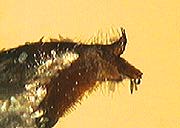
Dorsal appendage on seventh tergite of female; descending portion is abdominal tip including short ovipositor.
Comparison with Similar Species
This small species is the only known prodoxid found on members of the Nolinaceae. It can superficially resemble darker individuals of Prodoxus marginatus, but the latter never has any rusty scales. Females cannot be mistaken, given the unique uncinate appendage.
Host, Oviposition, and Larval Feeding Habits
Hosts include several species of Nolina and Dasylirion (Nolinaceae). Adults are primarily crepuscular, and can be found swarming around host inflorescences where they drink nectar, mate, and oviposit. The female oviposits into floral ovaries, and the larva completes development inside one or more seeds. The fully grown larvae burrow into the soil, where they pupate.

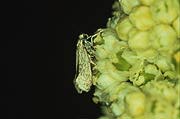
Female ovipositing into a Nolina ovary.
Geographic Distribution
Mesepiola specca is so far reported from the southern portions of California, Arizona and New Mexico.
Habitat
In desert and chaparral habitats with Nolina or Dasylirion.

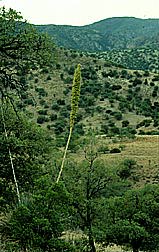
Dasylirion (center) in suitable stage for oviposition; Santa Cruz Co., Arizona.
References
Davis, D.R. 1967. A revision of the moths of the subfamily Prodoxinae (Lepidoptera: Incurvariidae). U.S. Nat. Hist. Mus., Bull. 255:1-170.
Nielsen, E.S. & D.R. Davis. 1985. The first southern hemisphere prodoxid and the phylogeny of the Incurvarioidea (Lepidoptera). Syst. Entom. 10:307-322.
Frack, D.C. 1982. A systematic study of prodoxine moths (Adelidae: Prodoxinae) and their hosts (Agavaceae), with descriptions of the subfamilies of Adelidae (s. lat.). M.S. thesis, California State Polytechnic University, Pomona, CA.
Title Illustrations

| Scientific Name | Mesepiola specca |
|---|---|
| Location | Riverside Co., California, USA |
| Specimen Condition | Dead Specimen |
| Sex | Male |
| Image Use |
 This media file is licensed under the Creative Commons Attribution-NonCommercial License - Version 3.0. This media file is licensed under the Creative Commons Attribution-NonCommercial License - Version 3.0.
|
| Copyright |
© 1996

|
About This Page

University of Idaho, Moscow, Idaho, USA
Page copyright © 1996
 Page: Tree of Life
Mesepiola specca .
Authored by
Olle Pellmyr.
The TEXT of this page is licensed under the
Creative Commons Attribution-NonCommercial License - Version 3.0. Note that images and other media
featured on this page are each governed by their own license, and they may or may not be available
for reuse. Click on an image or a media link to access the media data window, which provides the
relevant licensing information. For the general terms and conditions of ToL material reuse and
redistribution, please see the Tree of Life Copyright
Policies.
Page: Tree of Life
Mesepiola specca .
Authored by
Olle Pellmyr.
The TEXT of this page is licensed under the
Creative Commons Attribution-NonCommercial License - Version 3.0. Note that images and other media
featured on this page are each governed by their own license, and they may or may not be available
for reuse. Click on an image or a media link to access the media data window, which provides the
relevant licensing information. For the general terms and conditions of ToL material reuse and
redistribution, please see the Tree of Life Copyright
Policies.
Citing this page:
Pellmyr, Olle. 1996. Mesepiola specca . Version 01 January 1996 (under construction). http://tolweb.org/Mesepiola_specca/12416/1996.01.01 in The Tree of Life Web Project, http://tolweb.org/




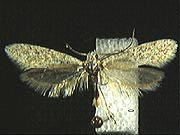
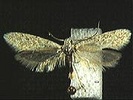


 Go to quick links
Go to quick search
Go to navigation for this section of the ToL site
Go to detailed links for the ToL site
Go to quick links
Go to quick search
Go to navigation for this section of the ToL site
Go to detailed links for the ToL site